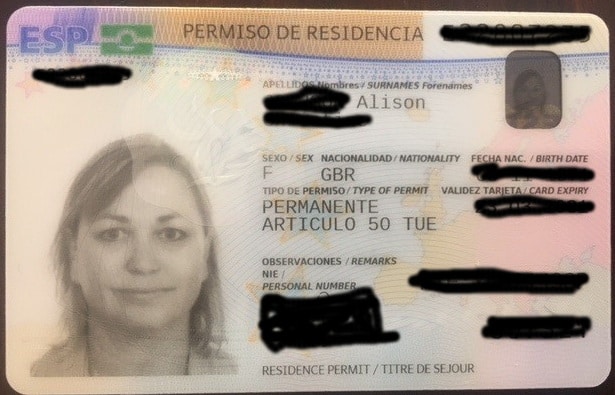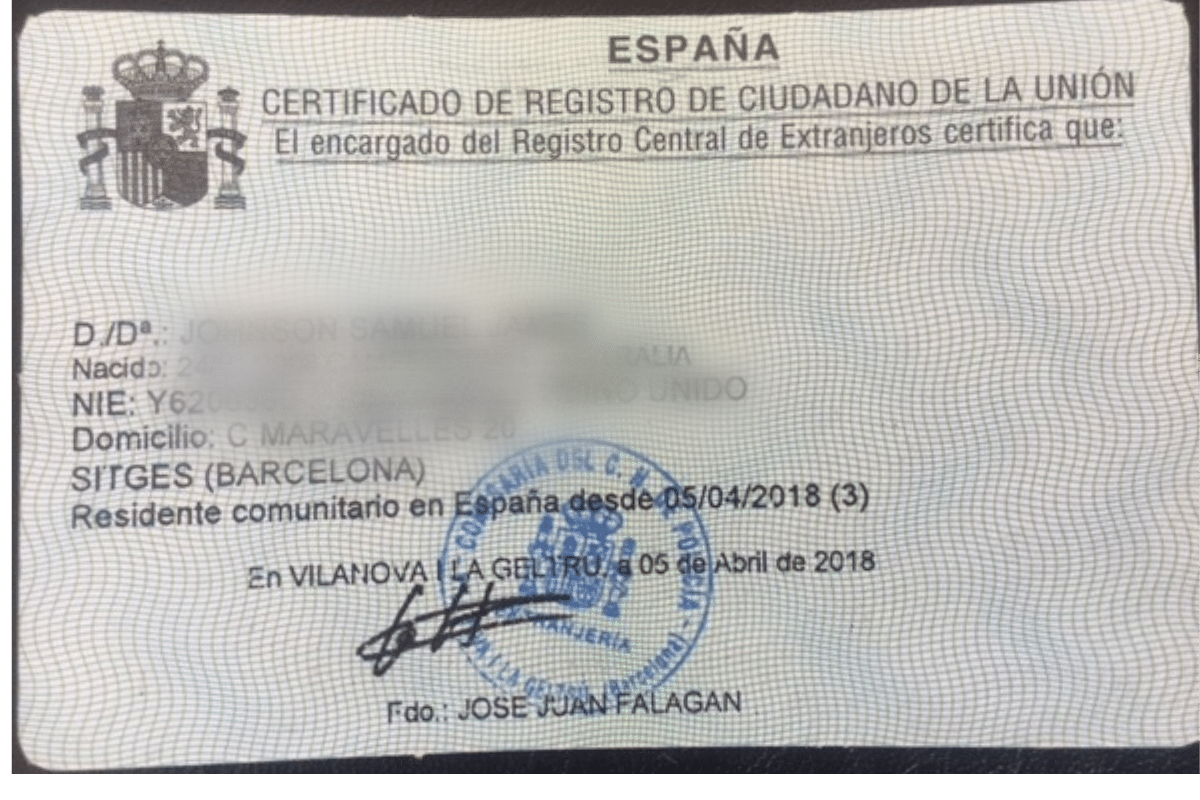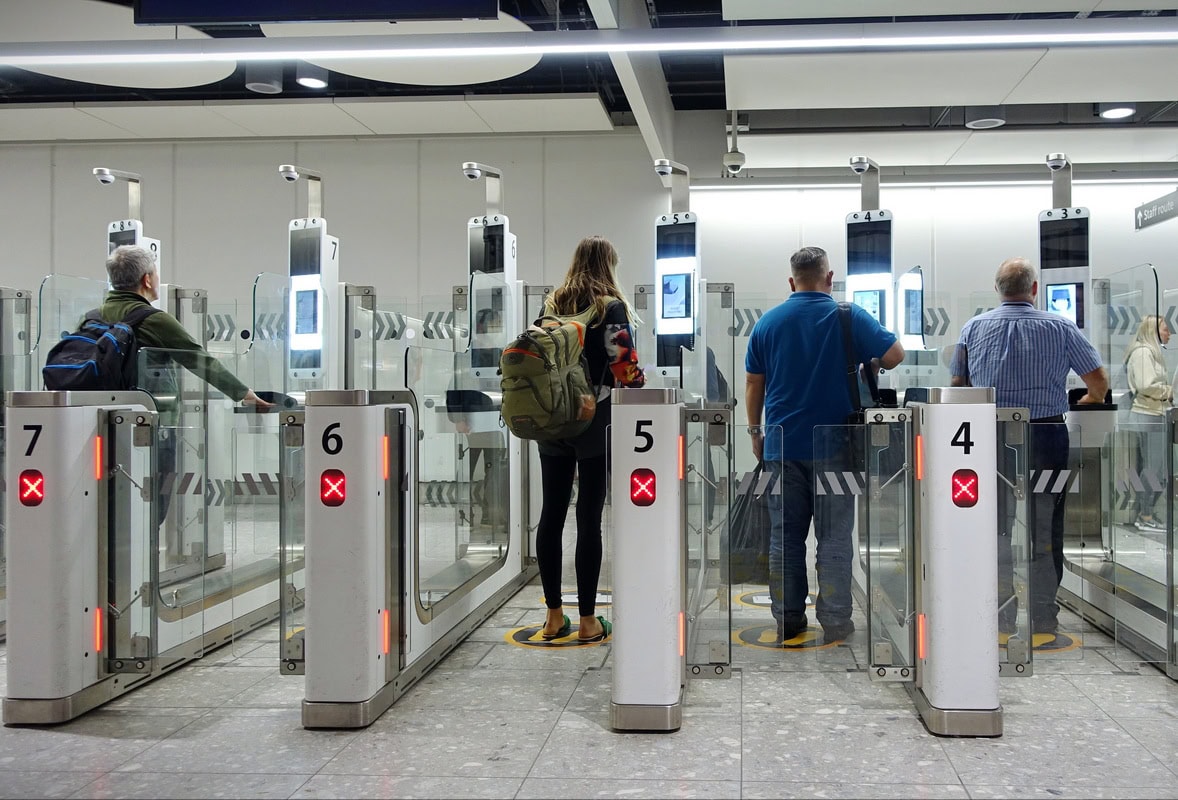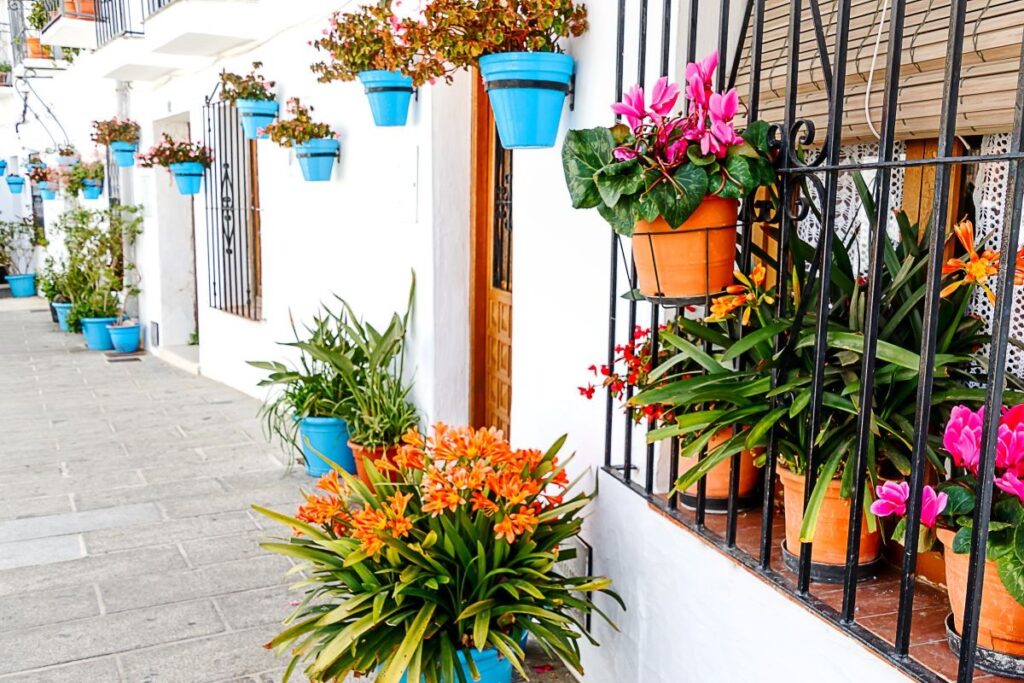If you live in Spain as a UK citizen, you’ve heard about the TIE and the many debates around swapping out your old green paper “NIE.”
The old green paper card (officially your Certificado de Registro de Ciudadano de la Unión Europea but often called your “NIE,”) is still legally valid. However, it no longer fully reflects the residency rights of Brits in Spain after Brexit. The alternative is a TIE (Tarjeta de Identidad de Extranjero), which translates to “Foreigner Identity Card.”
Our immigration lawyer partner has just highlighted a new reason for making the swap as soon as possible.
“UK citizens coming back into the EU after travelling may face very long delays and difficulties using the old green paper “NIE” once the EES starts in November 2024.”
Raquel Moreno (LLB) Spanish Immigration Lawyer
Note: UK citizens who moved to Spain after BREXIT already have a TIE.
EU Entry/Exit System (EES) Makes This Urgent
Implementation Date: 10 November 2024
The Entry/Exit System (EES) is an EU initiative to enhance border security by electronically tracking the entry and exit of non-EU nationals across the Schengen Area. Set to launch soon, EES will record biometric data like fingerprints, facial images, and travel details to better monitor who’s coming and going in the EU.
The system aims to reduce illegal immigration, identify overstays, and speed up border checks. The updated TIE will ensure you’re smoothly integrated into this new system for Brits living in Spain, preventing travel delays or complications.
The last time we returned to Spain, we were stuck in the non-EU citizens’ immigration line for 30 minutes – and that was annoying enough! Without a TIE, you should still get into Spain – but it might take much, much longer to clear immigration.
8 Reasons Brits in Spain Should Get a TIE
Switching to the TIE isn’t mandatory, but with the EES rollout and these other benefits, making the switch is highly recommended to keep your residency and travel status hassle-free.

- Easier Travel: The TIE simplifies re-entry into Spain, especially with the upcoming EES across the Schengen Area. The TIE works better with these new systems, ensuring smoother border crossings.
- Access to Services and Benefits: Some Spanish services, institutions, and even certain EU countries might prefer or require the TIE as the official document for non-EU citizens. This ensures continued access to healthcare, banking, and other essential services without hiccups.
- Enhanced Security: The biometric features on the TIE offer improved security, reducing the risk of identity theft or fraud. The TIE’s alignment with the EES simplifies this process.
- Future-Proofing Your Residency: Having the TIE ensures you fully comply with current and future Spanish and EU regulations, avoiding potential complications. The EES rollout makes it even more critical to have up-to-date documentation.
- Peace of Mind: The TIE eliminates the need for extra documentation when proving your residency status in Spain, simplifying bureaucratic processes. The TIE is increasingly recognized across Europe, giving you peace of mind when dealing with any bureaucratic matters.
- Streamlined Renewal Process: The TIE has a straightforward renewal process, which could be simpler and more reliable than keeping the green EU certificate long-term, especially as the EES system rolls out.
- Avoiding Future Issues: As the EES system rolls out, border control processes will become more automated and reliant on biometric data. A TIE ensures that your residency status is automatically recognized in these systems, preventing potential delays or complications at the border.
- Legal Clarity: The TIE clearly states your status as a non-EU citizen under the Withdrawal Agreement, ensuring you’re recognized as a resident post-Brexit. This legal clarity is crucial for avoiding misunderstandings with authorities.
“I got my TIE in 2022 and it is simpler to use as ID with the photo and signature. And it doesn’t fall apart in my purse like the old paper one!”
Alison Johnson – UK Citizen and Owner of Moving to Spain
The Status of the Old Green EU Certificate Post-Brexit
The old green EU certificate (Certificado de Registro de Ciudadano de la Unión) is still valid for British citizens living in Spain. Still, Brexit and the Withdrawal Agreement have directly affected its status.
- Still Valid: If you legally reside in Spain before the Brexit transition period ended on 31 December 2020, your green EU certificate remains valid and proves your legal residency under the Withdrawal Agreement.
- No Legal Obligation to Replace: According to Spanish authorities, you’re not legally required to exchange the green EU certificate for the new biometric TIE. The Spanish government must continue recognizing the green certificate as valid proof of residency.
- Practical Concerns: While still valid, the green certificate might cause practical issues, particularly during travel or when interacting with authorities. Its format doesn’t explicitly state your post-Brexit residency status as a third-country national.
3 Reasons To Keep Your Old Green “NIE”
If you’re weighing whether to keep your green EU certificate or switch to the TIE, here are a few points that might make you consider staying with the green certificate, though they may not be strong enough to outweigh the benefits of switching:
- No Immediate Legal Requirement: While you’re not legally required to swap the green certificate for a TIE, it’s worth noting that the green document is still valid under the Withdrawal Agreement. However, this doesn’t mean switching in the future won’t become more practical as systems evolve.
- Comfort with the Current System: If you’re already familiar with using the green certificate, you might prefer to avoid the minor hassle of switching. That said, the TIE is designed to be more compatible with current and future processes in Spain, so sticking with the green certificate might become less convenient over time.
- Limited Travel Needs: If you don’t travel outside of Spain often, the benefits of the TIE for smoother border crossings might not seem essential. However, as border control systems become more automated, having a TIE could save you potential headaches even if you travel infrequently.

These reasons might give you some pause, but they aren’t particularly compelling when considering the longer-term benefits of switching to the TIE, especially as new systems like the EES come into play./image
Impact of the Withdrawal Agreement
The Withdrawal Agreement guaranteed the rights of British citizens who were residents of Spain before the transition period ended. These include the right to continue living, working, and accessing services in Spain. The green EU certificate still proves these rights, but both the UK Home Office and the Spanish government encourage switching to the TIE.
How to Switch to a TIE
Switching from the green EU certificate (often called “NIE”) to a TIE (Tarjeta de Identidad de Extranjero) as a UK citizen already resident in Spain since before Brexit involves several steps. Here’s a straightforward guide to help you through the process:
The Easy Way >> Use Our Spain Immigration Lawyer Partner
Our immigration lawyer partners can help you with the process. You’ll still need to personally attend the biometrics appointments, but they’ll handle all the paperwork and bookings.
Need help with your Spain visa?
Our Immigration Partners, Raquel and her team, offer our clients a 30-minute consultation. They will recommend the best visa path for you, explain all the steps involved, and answer any questions that you have.
The Hard Way >> You Can DIY
1. Gather Required Documents
- Original Green EU Certificate: Your existing Certificado de Registro de Ciudadano de la Unión.
- Valid Passport: Your British passport, both the original and a photocopy.
- Recent Passport-Sized Photos: Usually, two recent color photographs with a white background.
- Proof of Address: A recent utility bill, rental contract, or padrón certificate to confirm your address in Spain.
- Completed EX-23 Form: This is the official application form for the TIE. You can download it from the Spanish government website.
2. Make an Appointment
- Visit the official Spanish government website to book an appointment.
- Choose the appropriate province and location for your appointment.
3. Attend the Appointment
- On the day of your appointment, bring all the required documents. Arrive on time at the designated police station or immigration office.
- Your documents will be checked during the appointment, and your biometric data (fingerprints) will be taken.
4. Pay the Fee
- You’ll need to pay a small fee for the TIE card, typically around €12 to €20. The fee is usually paid in advance at a bank using a form known as “Modelo 790, Código 012.”
- Bring the proof of payment (receipt) with you to the appointment.
5. Collect Your TIE
- After your appointment, you will receive a receipt (resguardo) that you’ll need to keep safe. This is proof that you’ve applied for the TIE.
- You’ll be notified (typically within 30 days) when your TIE is ready for collection. Return to the same office with your receipt to pick up your new TIE card.
6. Final Steps
- Once you receive your TIE, check that all the details are correct.
- Your new TIE card will officially replace your green EU certificate, which you may want to keep for your records, but it will no longer be your primary ID document in Spain.
Make the Switch Soon…
The TIE is better suited for non-EU citizens and includes biometric data, making it more secure and in line with post-Brexit regulations. While it’s not mandatory, switching to the TIE is a proactive step to ensure your residency status is transparent, secure, and future-proof.
And it’ll mean you spend as little time as possible starting in queues when you come home to Spain.








